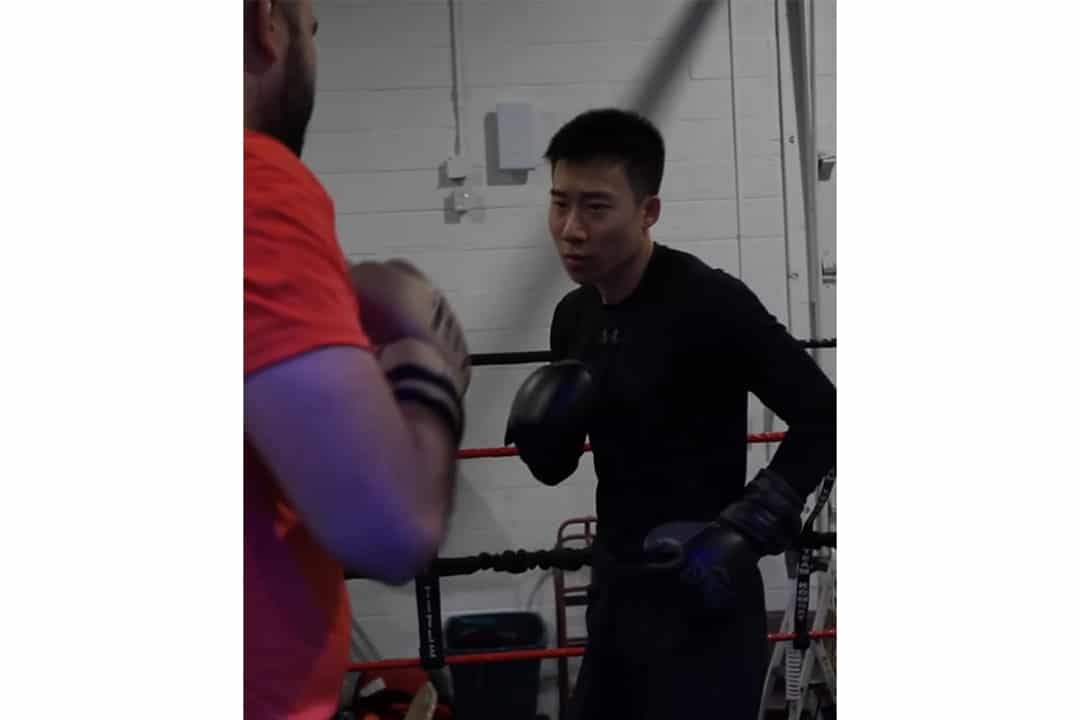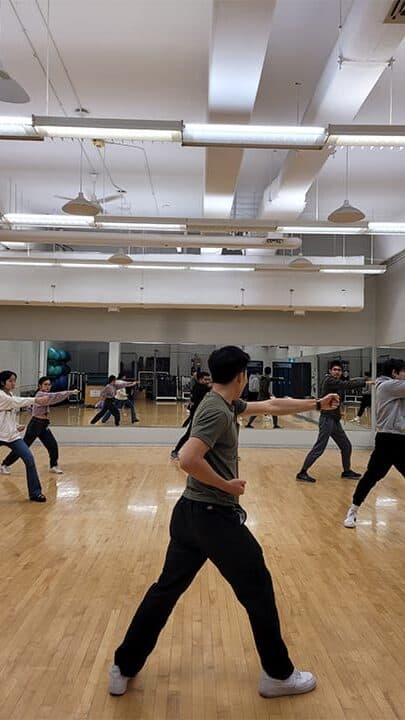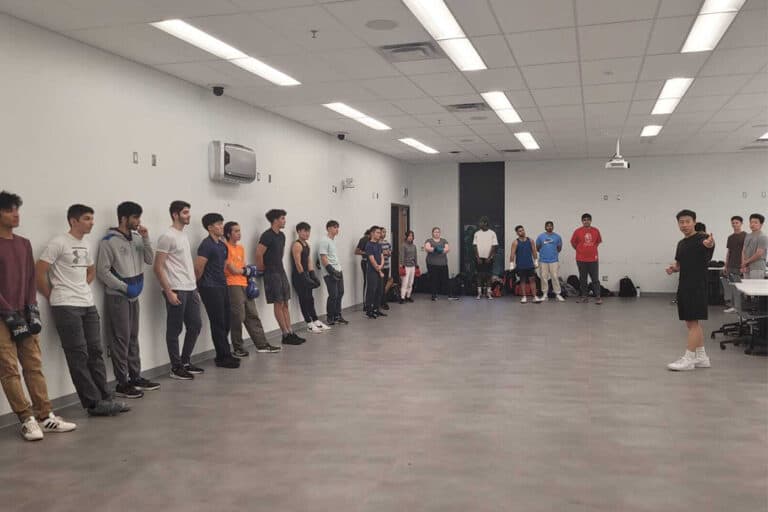At the end of 2024, Roy Han, a fourth-year UTM student specializing in digital enterprise management, seeks to make his professional debut in mixed martial arts (MMA) at Burlington Training Centre Fight Promotions.
It is a journey that started when Han’s father first introduced him to taekwondo at the age of seven. A few years later, Han began training in muay thai, where his love for striking was sparked. Striking, in particular, was intuitive for Han — from the simple things, like punching and kicking, to the intricacies of managing distance. “Hundred per cent, striking comes more naturally,” Han said in an interview with The Varsity.
Balance between disciplines
While striking formed Han’s foundation, established stars in MMA clearly show that a wide variety of styles are useful to excel in the sport. Whether you’re looking at the early days of MMA, where Royce Gracie showcased the effectiveness of Brazilian jiu-jitsu, or the more recent boxing-heavy style used by Sean Strickland, any style of MMA can be effective.
However, even if a fighter has the slick striking of Israel Adesanya or the relentless wrestling of Khabib Nurmagomedov, being exceptional in one discipline is only the start. A balance between disciplines and styles is essential to progress and succeed in the sport.
Identifying the areas in which one is lacking — whether that be on the ground or while standing up — and developing them further is essential to becoming a well-rounded mixed martial artist. Even at the lower levels of the sport, Han’s first-hand experience found that fighters with a more nuanced skillset tended to dominate those who were pure wrestlers or kickboxers.
Amateur competitions
Han has not only engaged in disciplines like grappling through tournaments such as the All Versus All Grappling Championship, but also in striking in the provincial and national kickboxing championships within the World Association of Kickboxing Organizations. Both grappling and striking have been important in his development as a fighter.
However, Han encountered struggles on both fronts early on. A few months after he started jiu-jitsu in 2019, Han faced competition from those who had many years of experience over him. “It really humbles you, and you have to take every defeat as a learning opportunity,” Han explained. Once he started winning and getting better at grappling exchanges at his gym and in tournaments, Han’s confidence built up and motivated him to keep training.
On the kickboxing side, Han had more experience going into tournaments, but it was very much still a learning process. There were always more technical opponents. Some were more aggressive — and a few were even faster. As Han asked, “Even if you’re really, really good, there’s always a guy who’s better, right?”
But even beyond that, Han finds that to compete at the higher levels, there’s a certain level of aggression one must switch on. “Some guys can turn it on a lot better than others,” Han explained.
What made kickboxing so appealing to him were the adrenaline rush and the mental focus required to outmaneuver his opponents with split-second decision-making.
Training and diet
To compete against such impressive competition, Han trains five to six days a week. Training becomes the most gruelling during fight camp, for about two months before a major bout, which features more focused training, including sparring sessions, and more time spent on conditioning. Han’s technical skills are also sharpened and integrated into a roadmap that sets him up to be as prepared as possible. At that point, training becomes “more of a curriculum,” Han shared.
Consistent hard training can be extremely draining, so Han pointed to having a proper diet as essential to recovery. He explained that “diet is almost just as important as training.” The difference in recovery that a clean and balanced diet provides creates a change in performance.
Such a change is especially noticeable in a sport as intense as MMA, where rest, recovery and nutrition are all important to minimize risk. A good team and good sparring partners are also essential to being well prepared for a fight.
Coaching and the club
Instructing has also been a central part of Han’s growth in MMA. In 2017, he began teaching kickboxing at his local gym in Burnaby, BC, which allowed him to learn from other instructors around him for a few years. Even during the pandemic, Han continued to teach boxing online. Now, he teaches both boxing and kickboxing at UTM’s Recreation Athletics and Wellness Centre.
In 2022, Han founded the UTM Martial Arts club, where he also teaches as the head coach, though he isn’t the only coach. Creating an official space expanded the small group with whom he already engaged in training into a larger community where people could share their knowledge and teach each other.
The club’s members include U of T students who are second dan black belts in karate, Varsity Blues wrestling team students, and grappling coaches who teach at local MMA gyms. The club has people trained in taekwondo, muay thai, jiu-jitsu, and kung-fu. Having such a variety of martial arts is something Han loves to see “because that’s kind of the spirit of the sport.”
Ultimately, while mixed martial arts is about fighting, it’s also about developing discipline and building community. Above all else, for Han, it’s a way of life.
Sharing his passion for MMA with like-minded individuals in the community is paramount for Han. He welcomes all students to come and join him at the UTM Martial Arts club, which holds training sessions twice a week and special events every now and then. To find more information, check out the UTM Martial Arts club’s Instagram page @utm.martial.arts or Discord.




